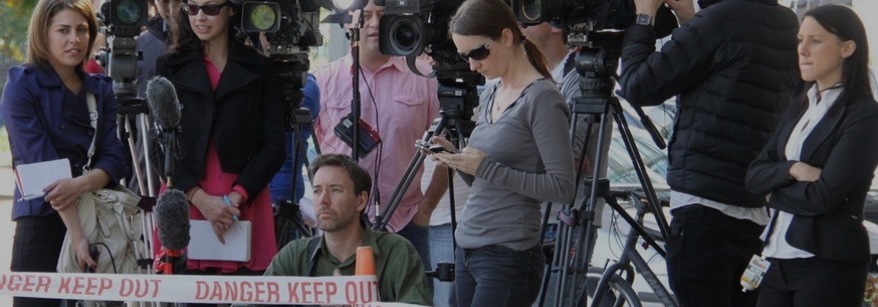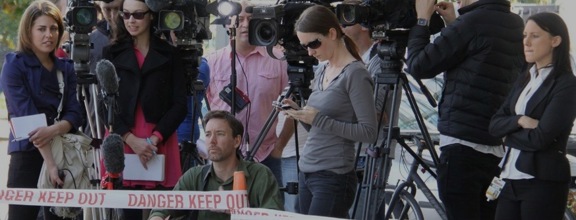

Bay of Plenty councils join forces to launch FutureFit
Climate change is a global challenge needing local action. Recognising this, councils within Bay of Plenty are excited to come together to support the region’s launch of FutureFit, an online tool to help individuals and families determine their carbon footprint and assist them in setting climate-friendly goals.
Bay of Plenty Regional Council General Manager of Integrated Catchments, Chris Ingle, says understanding your carbon footprint helps you understand your impact on the environment and what practical steps you can take to improve it.
“FutureFit is a simple yet powerful way for people to engage with climate change. By answering some quick questions about how you get around, what you eat, and how much energy you use, FutureFit is able to provide users with a snapshot of their impact on the planet. It helps people learn about which actions have the biggest footprint and to think creatively about changes they can make that fit within their lifestyles. I encourage everyone to give it a go,” says Mr Ingle.
Users can compare their results to national and world carbon footprint averages. The world (OECD) average is 10.8 tCO2e per person, while the New Zealand average is 7.7 tCO2e. FutureFit aims for an average of 5.3 tCO2e for each New Zealander by 2025.
Tauranga City Council Commissioner Shad Rolleston says it’s perfect timing to invite the community to try FutureFit while we are developing Tauranga’s first Climate Action and Investment Plan.
“This is an easy-to-use tool that can help those wanting to begin their journey for better climate and environmental outcomes, or even those already practicing a sustainable lifestyle.
“I’ve used similar tools to inform me about my individual and personal impact, and it’s given me power to adjust my behaviour where I can. Sometimes I travel into the city by bus because I can, and sometimes I travel by car because alternatives are not practical. We’re wanting to support the community to be involved in how we all tackle climate change, and this is one way individuals can help lead to better outcomes.”
Western Bay Mayor James Denyer says that even the smallest actions add up when we’re all working together to reduce our carbon footprint.
“It’s great to be working together on this with our neighbouring councils in the Bay of Plenty because we know climate change will affect all of us, and we can all do something – big or small – that will make a difference. And while it can be a very overwhelming topic, the FutureFit app makes it easy for everyone to develop new sustainable habits, based on their lifestyle.
“So whether you choose to install energy efficient lights or compost your food waste as I do, or consider an electric vehicle for your next car, there is something we can all do to make a positive change.”
FutureFit was created by Auckland Council, and Bay of Plenty is one of the first regions to bring the tool’s positive results to communities outside Tāmaki Makaurau. The initiative is a collaboration between Bay of Plenty Regional Council, Tauranga City Council, Western Bay of Plenty District Council, Rotorua Lakes Council, Ōpōtiki District Council, Whakatāne District Council, and Kawerau District Council.
Visit www.futurefit.nz to discover your carbon footprint and see how small changes add up to create positive impacts for better climate outcomes.
- ENDS -
For media enquiries please contact media@boprc.govt.nz
For media enquires relating to Tauranga City Council please contact communications@tauranga.govt.nz
For media enquires relating to Western Bay of Plenty District Council please contact communications@westernbay.govt.nz
Background
- A carbon footprint is used as an estimate of the impact of a person’s lifestyle on climate change. It’s made up of the emissions associated with your lifestyle and daily activities, like how you get around, where you travel to, how you power your home, what you choose to eat, and what you buy, over a year.
- Using FutureFit empowers kiwis to meet our emissions reduction targets, to have a lighter impact on papatūānuku.
- In New Zealand, driving a petrol car, taking flights and diets high in red meat are the most common lifestyle choices that emit high levels of carbon. Another significant factor is the carbon associated with the things we spend money on. New clothes and shoes, home décor, sports equipment, electronic devices, toys, batches and home renovations are some examples.
- The carbon emissions (tCO2e) reported in this media release use a consumption-based approach. You can learn more about how your carbon footprint is measured here.
- 1 tonne of carbon dioxide takes up 500m3 of space which is enough to fill around 6 double garages.
- 1 tonne of carbon dioxide is equivalent to driving nearly 4000km in a petrol or diesel car (that’s almost 4 roundtrips from Tauranga to Wellington!).
- In order to soak up (or ‘offset’) that 1 tonne of carbon dioxide, you would need to plant 18 native trees and keep them alive for at least 20 years.
